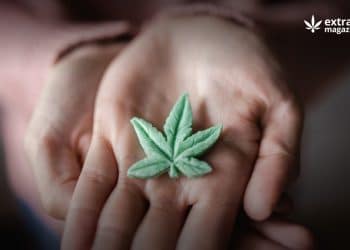As cannabis legalization happens in more states and the concentrates market continues to increase in popularity, so does the need for more accurate testing. Consumers have the right to know if contaminants are present in the concentrates they purchase. Contaminated and counterfeit cannabis concentrates present serious health risks.
Contaminants appear in cannabis products to varying degrees or concentrations, depending on the extraction method and how the flower was grown. The only truly valid way to know what contaminants you may be consuming is to obtain an extensive third-party lab report. However, some contaminants appear more often than others as products go through processing.
Perhaps the most common contaminants found in cannabis concentrates after the extraction process are pesticides, according to a report published by the Cannabis Safety Institute in 2015. In the report, the authors indicate that pesticide residue in many cannabis products exceeds the accepted levels of any other agricultural product.
The cannabis plant is vulnerable to insects, bacteria, and mold, even in indoor grow settings — and thus the need for pesticides. Pesticides are usually lipophilic and solubilized during cannabis extraction. [1] The elevated levels of pesticides found in cannabis concentrates have been predominantly due to the ever-changing industry regulations that vary from state to state, as well as a lack of oversight from government agencies.
Other common contaminants in cannabis concentrates are mycotoxins, which are toxic compounds produced by some types of fungi. [2] Researchers at the Cannabis Safety Institute indicate that cannabis flower without seeds and with low water content is relatively safe. Nonetheless, mycotoxins are generally more resistant to heat and processing than the microbes that produce them, and thus may survive and concentrate in extracts. Products using relatively new extraction methods, such as solventless rosin, could also have contaminants concentrated during production.
In a 2015 study conducted in California, over 80% of cannabis concentrate samples contained some form of contaminants. [3]
This is a significant area of concern as the cannabis industry continues to evolve. Both consumers and manufacturers have a responsibility to identify bad actors who produce concentrates with high levels of contaminants.
References:
- Montoya Z, et al. Cannabis contaminants limit pharmacological use of cannabidiol. Front Pharmacol. 2020;11. https://doi.org/10.3389/fphar.2020.571832. [Impact Factor: 3.860; Times Cited: n/a]
- Richard JL. Some major mycotoxins and their mycotoxicoses – an overview. Int J Food Microbiol. 2007;119(1-2):3-10. [Impact Factor: 3.451; Times Cited: 724]
- Raber JC, et al. Understanding dabs: contamination concerns of cannabis concentrates and cannabinoid transfer during the act of dabbing. J Toxicol Sci. 2015;40(6):797-803. [Impact Factor: 1.732; Times Cited: 93]
Image by Karolina Grabowska from Pexels












